It was 1946 when Dan Tyler was 12 and his family left their suburban Philadelphia roots to head out West. Tyler’s father had been stationed in North Africa with Field Marshal Montgomery during WWII, and when he returned home, he considered his career options. Already a successful businessperson and banker, the elder Tyler anticipated that the desire for beef cattle would grow significantly with the end of the war, and his wife, who loved the outdoors, was ready for a new adventure. Tyler wanted a place for his five children to learn the values associated with productive physical labor, so, despite a complete lack of experience in running a ranch, and to the dismay of the extended family, the Tyler family headed West.
“His family thought he was nuts. He didn’t know which end of a horse got up first,” says Dan Tyler about his father, “but when he proposed a move that would allow me to pursue my dreams of being a cowboy, I thought he was the greatest man alive.”
The Tylers landed in Carbondale, Colorado, a still-small town in the Roaring Fork Valley, just downstream from Aspen and upstream from Glenwood Springs. Mt. Sopris, a nearly 14-er, dominates the horizon.
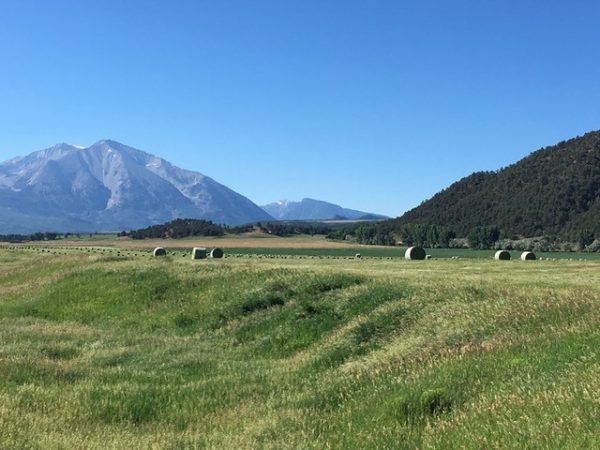
There was plenty of open land in Carbondale and Tyler’s father became owner of the Crystal River Ranch, a one-time potato farm then owned by W.D. Farr, a Greeley cattleman.
On the first day the family arrived, Dan Tyler and his two brothers were learning the machinery, branding calves, and pushing water around. Soon, they had a routine of waking up at 6 am and going to bed at 9 pm, exhausted from the hard labor. “My dad had no ability to ride horses, but he had sound instincts for business, and he ran the place efficiently,” says Tyler. On average, they ran 1,000 cows and farmed 1,600 acres of corn, oats, and hay.
At high school in Colorado Springs, Tyler, an average student, was captain of several school sports and president of the student council. During that time, he also learned how to fly small planes, and even mined uranium one summer in the deserts north of Moab, Utah.
It may be that Tyler’s father was right: by living and working on a ranch, the children learned the value of hard work and business acumen that would provide a pathway to success.
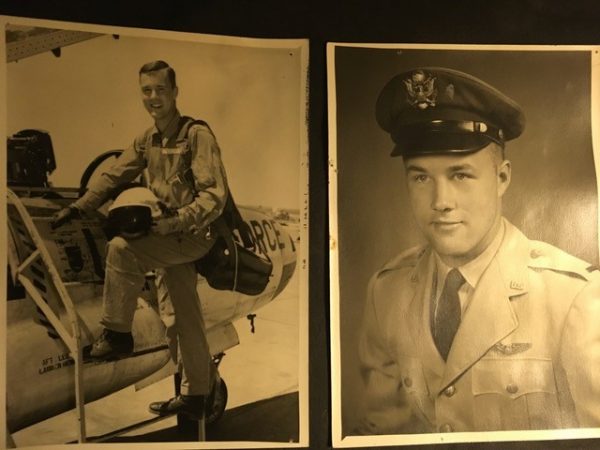
That solid foundation of hard work and multiple extracurricular activities impressed the admissions office at Harvard University (it also didn’t hurt that Tyler was a legacy student) and Tyler found himself studying political science there in 1951. “I was probably better at literature and other arts, but I had a tutor who was a PhD candidate in political science and he was my role model,” says Tyler, who had a particular interest in constitutional law and history, and was a member of the ROTC program. When he graduated in 1955, Tyler was commissioned in the Air Force and went through pilot training before assignment to the Air Force Training Command, teaching young cadets to fly single engine jets.
And this is when Tyler’s teaching career began. First, teaching flying. Next, teaching European history at the Punahou School in Honolulu, Hawaii. And, finally, teaching history at CSU and at the National University of Mexico.
After five years in Hawaii, Tyler went back to Colorado to help his father on the ranch. While exploring the veterinary science program at CSU, Tyler learned about a new western history program, taught by the late Charlie Bayard. Leaving animal science, but not agriculture and the West behind, Tyler received his master’s degree in history from CSU in 1967, and then moved to Albuquerque to pursue a PhD at the University of New Mexico. Because his faculty mentor focused on “the Borderlands,” the US/Mexican border, the Hispanic roots of American history, and Hispanic cultures of North and South America, Tyler’s own academic interests gradually focused on Hispanic language, history, and agriculture.
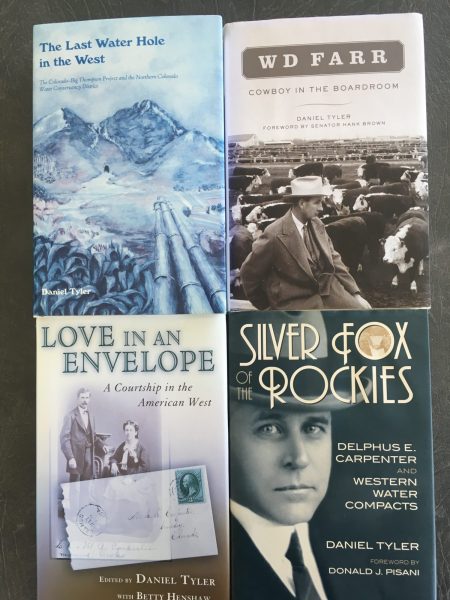
After receiving his Ph.D., Tyler taught history at CSU for five years before accepting an invitation from the State Department to teach United States history in Spanish at the National University of Mexico in Mexico City to celebrate the U.S. bicentennial (1976). “It was in Mexico that I became interested in Spanish language documents, especially those relating to Spanish and Mexican laws that apply to water,” says Tyler. “Water is the key to life in the American Southwest where most conflicts are still litigated under Spanish/Mexican law.”
Because of Tyler’s knowledge in this area, he acted as an expert witness on 10 different water rights cases in the Southwest. In 1978 Tyler returned to CSU and taught courses that ranged from Colorado history to water development and water law, to the American Southwest, until his retirement in 1999.
“American history is often taught east to west, and from Jamestown to California. My focus was on bringing the Spaniards up from Mexico and showing how they contributed to the country as we know it today and what kind of a mark they left on it,” says Tyler. “It’s not a point of view everyone is particularly comfortable with. That may be why I like it.”
“As a teacher, I thought that I should not be just a delivery vehicle for facts. Students at all levels appreciated the efforts I made to engage them in history as a story,” Tyler says. “Through story and dialogue, students began to recognize themselves as historians, and that history is not just a matter of memorizing names, dates, and places.”
In addition to his work in the classroom, Tyler ran the American West Program. “We had marvelous summer programs featuring various themes related to the American West. We invited scholars to come to CSU to talk about their special interests. We invited the public, showed old movies, danced, had art shows, and ‘talked story,’” says Tyler. Each summer, the program was advertised via posters designed by local artist Bob Coonts (’63), one of the founders of the Colorado International Invitational Poster Exhibition.
This year’s AWP event is on Nov. 7 and the poster will be designed by graphic design faculty, Jason Frazier.
Since Tyler’s retirement, he moved to Steamboat Springs, Colorado, and more recently to Denver, where he spends time with his partner, Betty, and his children and grandchildren. “I still enjoy outdoor activities. I ski some, play golf, swim, hike, and do yoga. I try and stay as active as I can,” he says. He keeps his mind active, too, by playing the guitar, writing short stories, poems, and a memoir. “It’s fun because I have two families: three older boys and then a boy and girl. The two families don’t know each other well. I’m doing my life story for them,” he says.
And what a life story it is.
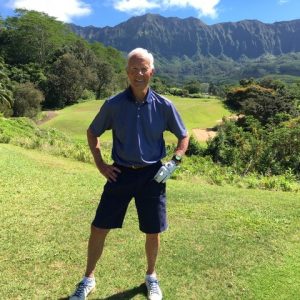 |
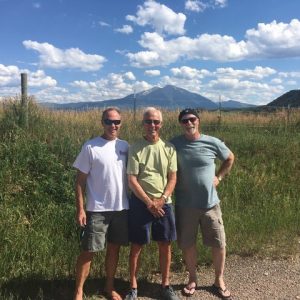 |
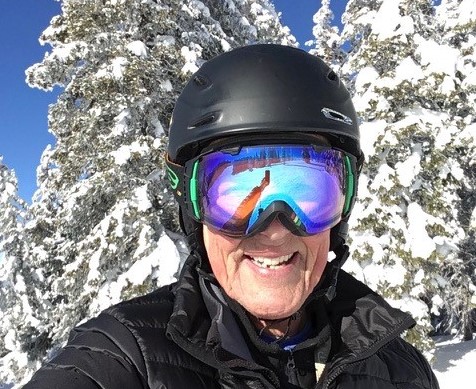 |
|---|
Photos courtesy of Dan Tyler
Alumni Award
Emeritus Professor Dan Tyler was recognized as the 2019 Distinguished Alumnus for the College of Liberal Arts at the Distinguished Alumni Awards on Oct. 3, 2019.
“It should be me who recognizes CSU for providing such an extraordinary opportunity to be with a group of people who gave such a meaningful education to me, one which now in retirement has enriched my life beyond measure,” he says.
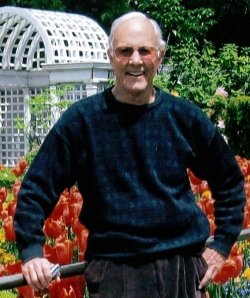
Passion for Philanthropy
In addition to history, water, and the West, another of Dan Tyler’s interests is philanthropy. Tyler created the Gateway to Graduation Scholarship in 2012 for students who are financially struggling to finish their college degrees.
“Tony Frank came up to Steamboat early on in his presidency. He gave a talk about how so many students were having trouble finishing up at CSU because of the recession. They were leaving the University because their parents were unemployed and there was no money available.
I asked if I could help by setting up a scholarship. We’ve been able to leverage other gifts and gradually the fund began to grow. It now has $250,000 in it, thanks to the generous support of history department colleagues, the leadership of Tony Frank and Joe Blake, and the successful fundraising of College development professionals.
My modest philanthropic endeavors are principally aimed at educational hardship: college students finishing their liberal arts degrees at CSU; children struggling to remain in music programs in Steamboat Springs, or disadvantaged people in other regions for whom education is a pipe dream.”